Slavic tribes settled in the territory of modern Kaluga as far back as VII century. But the city has been mentioned in chronicles only since 1371. One of the first settlements on this site was located at the mouth of the Kaluzhka River, which explains the name of the city. Kaluga was an apple of discord for Moscow princes and Grand Duchy of Lithuania: the border between their possessions passed along the Ugra River in the environs of Kaluga. It is here where a milestone event for the Russian history took place — the Great stand on the Ugra River in 1480. Back then, Russian soldiers repelled the attacks of Akhmat, Khan of the Great Horde, thus putting an end to the Mongol-Tatar Yoke.
In the XVIII century, Kaluga became the central city of the governorate, where a linen factory and ironworks were built, as well as a drama theater, a printing house and over 100 enterprises appeared. The glory of the Kaluga craft spread far beyond the city. In particular, the local embroidery, the Kaluga color interweaving, became widely known. Kaluga was also known for the gingerbreads which were used unusually. Here people threw them to a distance or competed in the ability to split them with a strike of the sharp of the hand.
After the Great Patriotic War, Kaluga became a major scientific and industrial center, the capital of Soviet cosmonautics. Konstantin Tsiolkovsky, the author of works on aeronautics, rocket dynamics and cosmonautics, lived and worked here. This man was completely «immersed» in the cosmos and dreamed of its populating and spreading life throughout the universe. Tsiolkovsky did not live to see the cosmic flights, but Yuri Gagarin, the world’s first cosmonaut, laid here the first stone in the foundation of the Museum of Cosmonautics named after Tsiolkovsky. Today Kaluga also specializes in the automotive industry: Volkswagen and Volvo plants are located in the region.
It is believed that thanks to the preserved old buildings Kaluga is similar to Moscow of the 19th century. Wooden architecture, in particular, the Baroque chambers of Korobov and Tolmachev, has survived here. There are many ancient churches in the city: Cosmas and Damian Church, the Church of the Transfiguration, the Holy Trinity and St. George’s Cathedrals. In general, Kaluga and its surroundings are known as places of pilgrimage: it is here where there are the famous monasteries of Russia: Optina Pustyn, Tikhonova Pustyn and the Savior of the Holy Face Pustyn. Since recently, Kaluga has every chance to become a Mecca for connoisseurs of contemporary art: this is facilitated by the «Nikola-Lenivets» Art Park.
Kaluga is proud of the fact that some of its establishments serve the gastronomical delicacies that have been undeservedly forgotten in Russia, such as like kundyum — original dumplings with mushroom stuffing, fish kalja — soup of a cucumber brine, and telnoye — fish chop (or fish zrazy). The city has its own signature dish — Kaluga dough. This is a dessert: sweet bread mass made of dry toasts and shaped like small balls.
In Kaluga, you can make a lot of pleasant discoveries for yourself, learn interesting details about the history of cosmonautics, feel the tranquility spilled in the air of Optina Pustyn and Tikhonova Pustyn, and taste real Russian cuisine. In addition, Kaluga has been included in the «Golden Ring of Russia» since 2016, and this is another reason to come and see this city.
Get directions
It is convenient to get to Kaluga from Moscow: it takes about three hours by train, bus or car. There is a regular Grabtsevo Airport in the city. It accommodates flights from Ufa, Simferopol, Kaliningrad and Sochi. In the future it is planned to connect Kaluga with the cities of Europe and Central Asia.












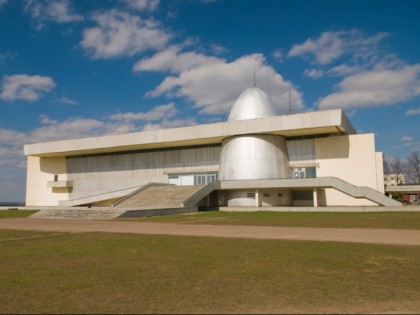
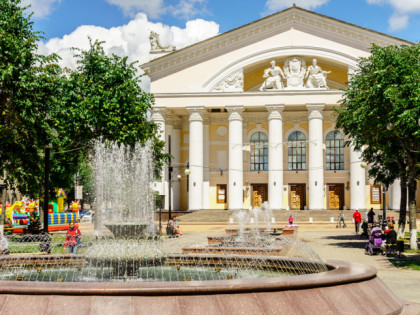
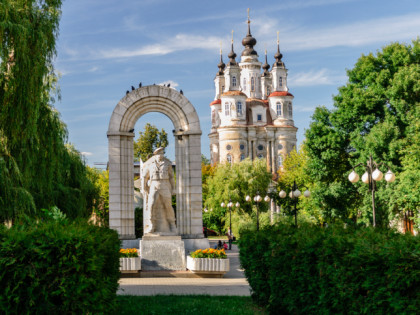
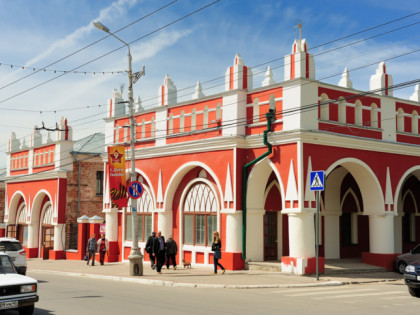
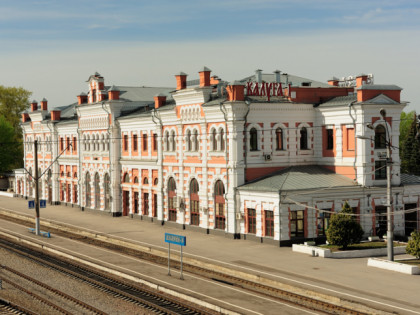
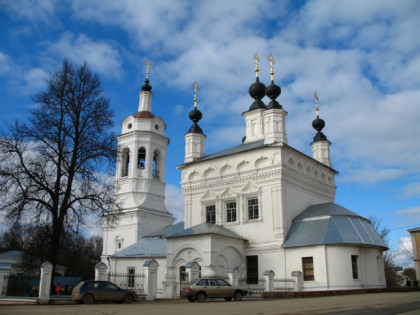
 Museums and Exhibitions
Museums and Exhibitions
 Parks and recreation
Parks and recreation
 Other places
Other places
 Architectural Monuments
Architectural Monuments
 Temples and places of worship
Temples and places of worship